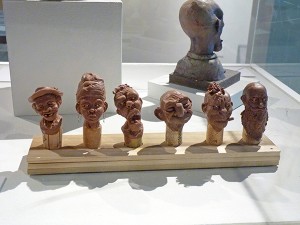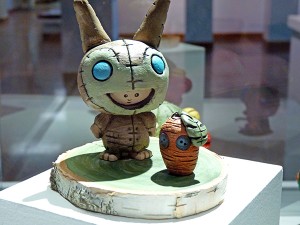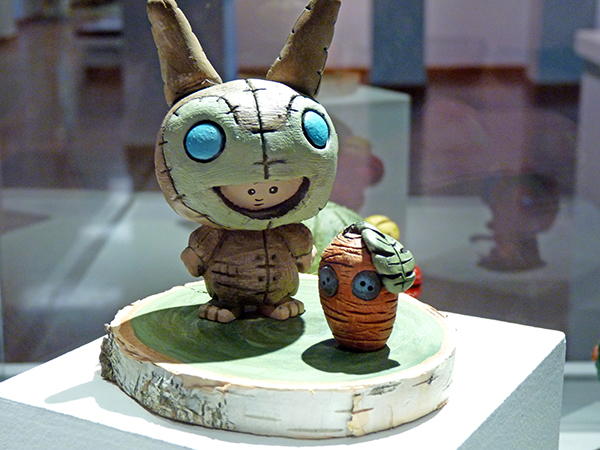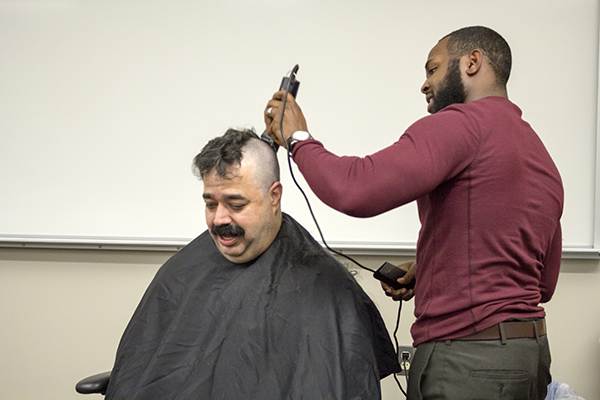
Photos by Hope Sandusky /The Collegian
By Hope Sandusky/nw news editor
NW’s Lakeview Gallery is displaying the work of different professional artists in GMO: Grotesquely Macabre Organisms.
The exhibit features the work of six artists and explores the possible consequences of what happens when science and creation come together.
Heavily influenced by science fiction, the works include video, animations and toy creations, looking at what the landscape and populations of this new world would look like.
The exhibit’s curator, Christian deLeon, picked these pieces as a spinoff of what society commonly knows GMO to stand for: genetically modified organisms.
“Whether we like it or not, we have become tinkerers with things we don’t fully understand,” he said. “The exhibit portrays a lighter touch, something cute to make fun.”
Cute may accurately describe Wendy Williford’s sculptures of small vinyl toys made of PVC. One of her toys, “Cactus Critter,” features a small, childlike cactus with large black eyes and small skulls at its feet. In contrast, another toy, “Texas Walker,” is a little more eerie with a small creature with mouth agape and blood spots all over his green skin with his brain exposed.
“My pieces project an innocent cuteness with a subtle darkness looming around them,” she said.
Similar to Williford’s, Daniel Zinck’s sculptures feature more of the grotesque look that the exhibit is so aptly named. One of his works, “Swamp Walker,” is of a tall, long-limbed green alien with a menacing face walking through water, a look which was achieved by using resin.

Photos by Hope Sandusky /The Collegian
“Whether it be creepy or cute, I enjoy the process of making something have its own personality,” he said.
A CG artist for ReelFX in Dallas, Zinck’s work can also be seen in the film The Book of Life.
Following the line of sculptures, Edouard Crago features what happens when science transforms ordinary creatures. “Heloderma Basilicium” features a chicken morphed with the body of a lizard and the tail of a snake as it guards a single egg.
“I address issues or problems that I feel need attention, often choosing to address them in a comical manner,” he said. “The more serious the matter, the more ridiculous the parody becomes.”
Teachers together at Eastern Michigan University, Brian Spolans and Ryan Molloy collaborated to create an animation video, featuring a barren desert composed of hexagons and riddled with skulls and cacti.
Featured on the wall across from it is Martin Back’s “Strange Objects and Digital Siminifinite Space,” a hypnotic video feedback, featuring waves of color and seemingly evolving mandalas.
The video was created through software that uses several virtual cameras and screens pointed at each other to create feedback loops.
“The work points simultaneously backward and forward,” he said. “I am exploring some of the familiar terrain while also forging ahead into unknown territory.”
The gallery (WFAB 1135) is open 8 a.m.-10 p.m. Monday-Thursday, 8 a.m.-5 p.m. Friday, and 9 a.m.-3 p.m. Saturday.
The exhibit runs through Feb. 16.





























